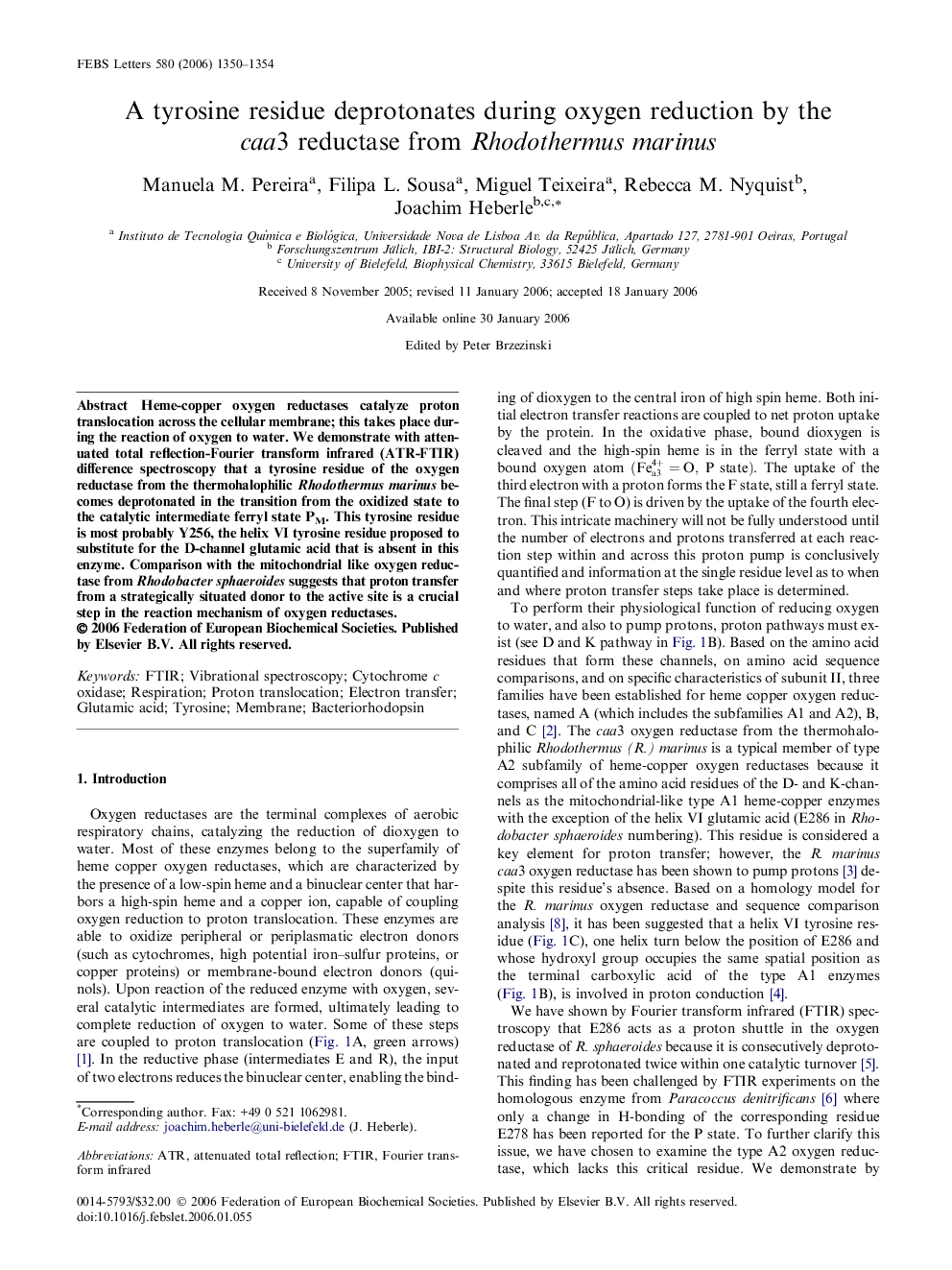| Article ID | Journal | Published Year | Pages | File Type |
|---|---|---|---|---|
| 2051651 | FEBS Letters | 2006 | 5 Pages |
Heme-copper oxygen reductases catalyze proton translocation across the cellular membrane; this takes place during the reaction of oxygen to water. We demonstrate with attenuated total reflection-Fourier transform infrared (ATR-FTIR) difference spectroscopy that a tyrosine residue of the oxygen reductase from the thermohalophilic Rhodothermus marinus becomes deprotonated in the transition from the oxidized state to the catalytic intermediate ferryl state PM. This tyrosine residue is most probably Y256, the helix VI tyrosine residue proposed to substitute for the D-channel glutamic acid that is absent in this enzyme. Comparison with the mitochondrial like oxygen reductase from Rhodobacter sphaeroides suggests that proton transfer from a strategically situated donor to the active site is a crucial step in the reaction mechanism of oxygen reductases.
